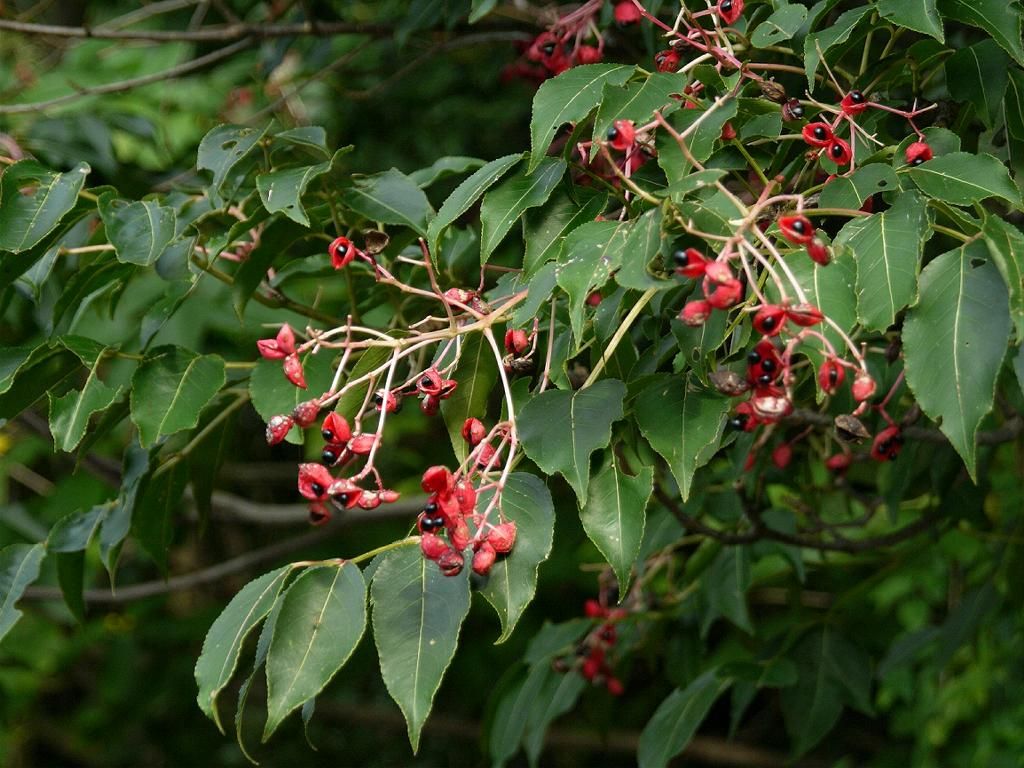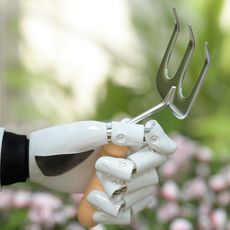Euscaphis Information: Learn About Growing Euscaphis Japonica


Euscaphis japonica, commonly called Korean sweetheart tree, is a large, deciduous shrub native to China. It grows to 20 feet (6 m.) high and produces showy, red fruit that look like hearts. For more Euscaphis information and tips for growing, read on.
Euscaphis Information
Botanist J. C. Raulston came across the Korean sweetheart tree in 1985 on the Korean Peninsula while participating in a U.S. National Arboretum collection expedition. He was impressed with the attractive seed pods and brought some back to the North Carolina State Arboretum for assessment and evaluation. The Euscaphis is a small tree or tall bush with an open branch structure. It usually grows to between 10 and 20 feet (3-6 m.) tall and can spread to 15 feet (5 m.) wide. During the growing season, slender emerald-green leaves fill the branches. The leaves are compound and pinnate, about 10 inches (25.5 cm.) long. Each has between 7 and 11 shiny, slender leaflets. The foliage turns a deep golden purple in autumn before the leaves fall to the ground. The Korean sweetheart tree produces small, yellowish-white flowers. Each flower is tiny, but they grow in 9-inch (23 cm.) long panicles. According to Euscaphis information, the flowers are not particularly decorative or showy and appear in spring. These flowers are followed by heart-shaped seed capsules, which are the true ornamental elements of the plant. The capsules ripen in autumn and turn a bright crimson, looking a lot like valentines hanging from the tree. In time, they split open, showing the shiny dark blue seeds within. Another decorative feature of the Korean sweetheart tree is its bark, which is a rich, chocolate purple and bears white stripes.
Euscaphis Plant Care
If you are interested in growing Euscaphis japonica, you’ll need Euscaphis plant care information. The first thing to know is that these shrubs or small trees thrive in U.S. Department of Agriculture plant hardiness zones 6 through 8. You’ll need to plant them in well-drained, sandy loams. The plants are happiest in full sun but will also grow well in partial shade. Euscaphis plants do fine in short periods of drought, but plant care is more difficult if you live in a spot with hot, dry summers. You’ll have an easier time growing Euscaphis japonica if you keep the soil consistently moist.
Gardening tips, videos, info and more delivered right to your inbox!
Sign up for the Gardening Know How newsletter today and receive a free copy of our e-book "How to Grow Delicious Tomatoes".

Teo Spengler is a master gardener and a docent at the San Francisco Botanical Garden, where she hosts public tours. She has studied horticulture and written about nature, trees, plants, and gardening for more than two decades. Her extended family includes some 30 houseplants and hundreds of outdoor plants, including 250 trees, which are her main passion. Spengler currently splits her life between San Francisco and the French Basque Country, though she was raised in Alaska, giving her experience of gardening in a range of climates.
-
 Best Indeterminate Tomatoes: Flavor-Packed Varieties For Fresh Harvests All Summer Long
Best Indeterminate Tomatoes: Flavor-Packed Varieties For Fresh Harvests All Summer LongIndeterminate tomatoes are vining varieties that fruit all season. Discover their distinctive features and how to choose the best type to grow in your garden.
By Bonnie L. Grant
-
 The Dangers Of AI For Gardening – How To Know What’s Real When It Comes To Your Garden
The Dangers Of AI For Gardening – How To Know What’s Real When It Comes To Your GardenThings aren’t always what they seem when it comes to using AI for gardening. Be discerning when relying on AI for accuracy, and take the time to do research.
By Teo Spengler